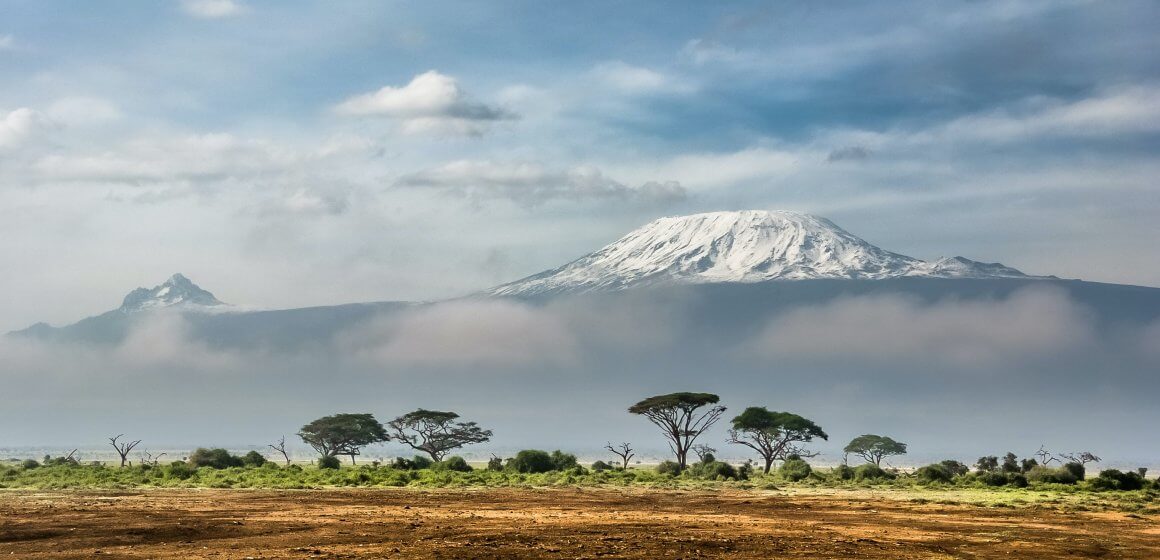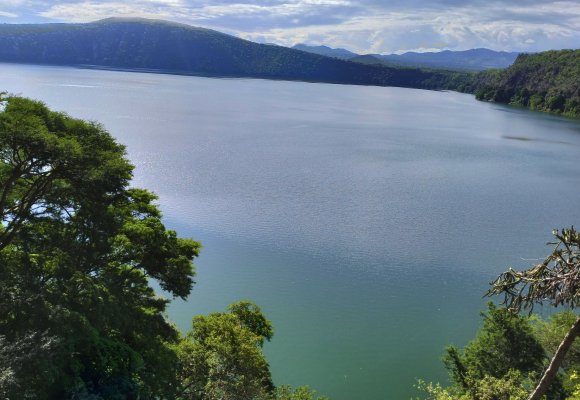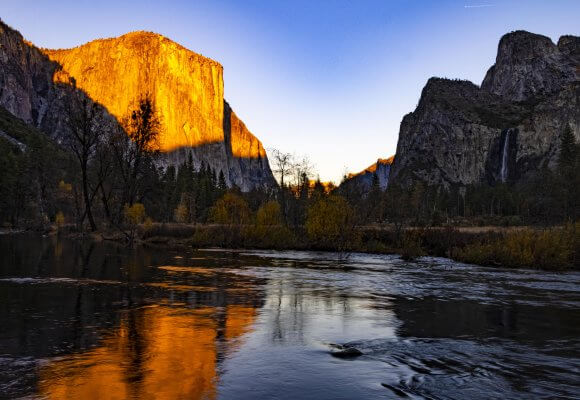The word “safari” is nearly always thought of in conjunction with Kenya because of the country’s name. Everyone who goes to Kenya is blown away by the variety of activities they can do there, but witnessing the country’s plentiful wildlife. Not many other sites on the earth can evoke the same excitement and passion as this one.
Witness the savanna in the Maasai Mara; gaze in awe at Lake Nakuru, which is dotted with thousands of flamingos. All of these incredible sights can be found in Kenya. In these territories bathed in sunlight, ancient peoples such as the Maasai, Kikuyu, and Samburu continue to practice their past practices while maintaining a lifestyle that is in balance with the natural world.
A rich trove of seaside attractions may be found just outside the world-famous safari parks. You may go snorkeling and diving among fish-filled coral reefs, relax on white beaches, cultures, and cuisines in Mombasa and Malindi, and go to tropical islands deep in the history of Swahili.
Kenya has some breathtaking landscapes. The Great Rift Valley may be found in the middle of the country and is surrounded by mountain ranges and calderas. You can go mountain climbing on the snow-covered equatorial peaks of Mount Kenya to the east of this expansive valley, and you can fish for trout in the main streams. Caves made of obsidian can be found within Hell’s Gate National Park, in addition to natural geysers and springs of boiling water.
The city of Nairobi is one of the top places to visit in Kenya if you want to relive the film Out of Africa’s depiction of the colorful colonial history of Kenya. This teeming metropolis is the entry point to one of the vacation locations considered among the most alluring and fascinating worldwide. With the help of our guide to Kenya’s most popular tourist destinations, you may learn about even more fabulous locations to see while you’re there.
Maasai Mara National Reserve
Maasai Mara National Reserve, usually known simply as “Masai Mara,” is widely regarded as one of Africa’s most spectacular game reserves. The Mara is located on Kenya’s border with Tanzania. The Mara is in the northern part of the Serengeti and is a wildlife corridor between Kenya and Tanzania.
It is named after the tall, crimson-robed Maasai people who have lived in this area for millennia and continue to graze their livestock in this park. “mottled” is what the word “Mara” means in their language. They deal with the interplay of light and shadow cast by the acacia trees and cloud-studded skies over the enormous plains.
The park gained its notoriety due to the Great Migration, which occurs between July and October which involves the movement of thousands of wildebeest, zebra, and Thomson’s gazelle both to and from the Serengeti.
The Mara River is home to a large population of both hippos and crocodiles. Because of the park’s relatively significant populations of lion, cheetah, and leopard – particularly during the dry months from December through February – is also well known for giving good opportunities to see predator animals. This is especially true during the dry months.
The Amboseli National Park and Wildlife Reserve
Amboseli National Reserve is one of the most visited tourist parks in Kenya. It is presided over by Mount Kilimanjaro, the highest mountain in Africa. The Maasai word “Amboseli” derives from a phrase that means “salty dust,” which is a suitable translation given the park’s arid climate.
The reserve is regarded as one of the continent’s top destinations for up-close encounters with enormous elephant herds. Other animals that can frequently be seen in the park include large cats like lions and cheetahs, giraffes, and over 600 different species of birds.
The former bed of Lake Amboseli, which has since dried up, marshes with sulfur springs, savannah, and forests are some of the five diverse habitats that visitors interested in nature can explore here. Try to make contact with the Maasai people who live in the area immediately surrounding the park.
The National Park of Tsavo
The largest park in Kenya is called Tsavo, divided into two parts: Tsavo West and Tsavo East. These parks feature rivers, waterfalls, savannahs, volcanic hills, lava-rock plateau, and a remarkable variety of species over their combined 4% of the country’s land area. Together, they make up 4% of the country’s total land area.
Tsavo East is famed for its photogenic sightseeing of elephant herds rolling and bathing in red dust, and it is situated exactly in the middle of the journey between Nairobi and Mombasa. The Galana River, lined with palm trees and winds its way through the park, offers a verdant contrast to the dry plains and makes for superb wildlife viewing.
Other attractions in this area include Mudanda Rock, the Lugard Falls, known for their rapids and pools full of crocodiles, and the Yatta Plateau, which is home to the most extended lava flow in the world.
Tsavo West is drier and has a more topographically diverse landscape than Tsavo East, with some of the most breathtaking views located in the park’s northernmost regions. The Mzima Springs are a series of natural springs with significant populations of hippos and crocodiles; the Chaimu Crater, a fantastic site for observing birds of prey; and the Ngulia Rhino Sanctuary are the three main attractions in this area.
Because of the thicker foliage, it is more difficult to spot wildlife in Tsavo West; nonetheless, the park’s breathtaking panoramas make up for this disadvantage.
The national reserves of Samburu, Buffalo Springs, and Shaba
The Samburu, Buffalo Springs, and Shaba Reserves are located in an arid region in the far north of Kenya, close to the border with Ethiopia. The banks of the Ewaso Nyiro River are fringed with palm trees.
Elsa the lioness, who became famous thanks to the movie Born Free, was nurtured by George and Joy Adamson in one of two locations: Shaba National Reserve.
The river’s waters are vital for the survival of wildlife, and many species have developed specialized adaptations to enable them to thrive in the arid environment. These animals include Grevy’s zebras, Somali ostriches, and gerenuks, long-necked antelopes that stand on just their hind legs to reach the new shoots on the upper branches of trees.
The Sarara Singing Wells is a popular destination within Samburu National Reserve. Samburu warriors sing their ancient songs while delivering water for their cows. Large cats, wild dogs and many more may be spotted.
Lake Nakuru National Park
Lake Nakuru National Park, located in the middle of Kenya, is well-known for the large number of pink flamingos that inhabit the park and one of top places to visit in Kenya. Lake Nakuru is one of the best soda lakes comprising over a third of the park’s territory, where the birds congregate in large numbers.
The park was founded in 1961, and it has been sightings of over 450 birds here, as also a wide variety of other species of wildlife. You may come across lions, leopards, warthogs, waterbucks, pythons, and white rhinos, to name a few of the creatures, and the sceneries may vary from open grasslands along the lake to rocky cliffs and forests.
Additionally, the park safeguards the continent’s most extensive euphorbia candelabrum forest. These tall succulents with branching structures are native to the area and add a strikingly textured component to the otherwise parched environment.
Lamu Island
The small island of Lamu, located northeast of Mombasa, exudes an alluring the past. Lamu Old Town, now listed as UNESCO World Heritage Site, is the oldest settlement in Kenya and has been continuously inhabited since it was founded in the 12th century.
The best thing to do in this location is to wander through the winding alleyways. The structures on the island each bear traces of the island’s long and prosperous history in the trade. It is possible to recognize elements of architecture from the Arab world, Europe, and India, while yet being able to identify a Swahili method. Typical characteristics include verandas, rooftop patios, hidden courtyards, verandas, intricately carved wooden doors, and buildings made of coral stone.
Dhows are used to navigate the harbor, there are very few, or even no, motorized cars, and donkeys are still used to get around town much as they have been for centuries. Muslims make up the majority of Lamu’s population, and the majority of both men and women choose to dress in traditional garb.
The Lamu Museum, which features exhibits on Swahili culture as well as the region’s maritime history, and the Donkey Sanctuary are one of the top places to visit in Kenya and on the island.
If you find that learning about the island’s history is too much for you, get into one of the island’s beaches with white sand or sip Arabic coffee at a café in the area.
Lake Naivasha
Lake Naivasha, which may be found at the highest point of the Great Rift Valley, is a popular destination for people who enjoy watching birds and top places to visit in Kenya. There have been sightings of over 400 different kinds of birds in this area, some of which include African fish eagles, jacanas, white-fronted bee-eaters, and numerous other species of kingfishers.
A boat ride is among the most enjoyable ways to see the local fauna. Hippos can be seen swimming about in the water, and other animals, including giraffes, zebras, buffaloes, and can be seen grazing around the lake. Additionally, look for colobus monkeys up in the tree tops.
A wildlife-filled nature route may be found in the Crater Lake Game Sanctuary, located close to Lake Naivasha.
Hell’s Gate National Park is located just to the south of Lake Naivasha and is a relatively inexpensive national park that protects a wide variety of wildlife and provides excellent opportunities for rock climbing and the red cliffs of Hell’s Gate Gorge.
You can stop by the Elsamere Conservation Centre, located on the southern bank of Lake Naivasha, for a cup of tea. This building was formerly the home of the late Joy Adamson, who wrote Born Free, and her husband George.
Lake Naivasha has been known to experience significant shrinkage during periods of acute drought. On the other hand, the lake is ordinarily verdant and bustling with activity. Additionally, the thriving floriculture business in the area impacts the quantity and quality of the local water supply.
Read More News at: The Africana Voice






















